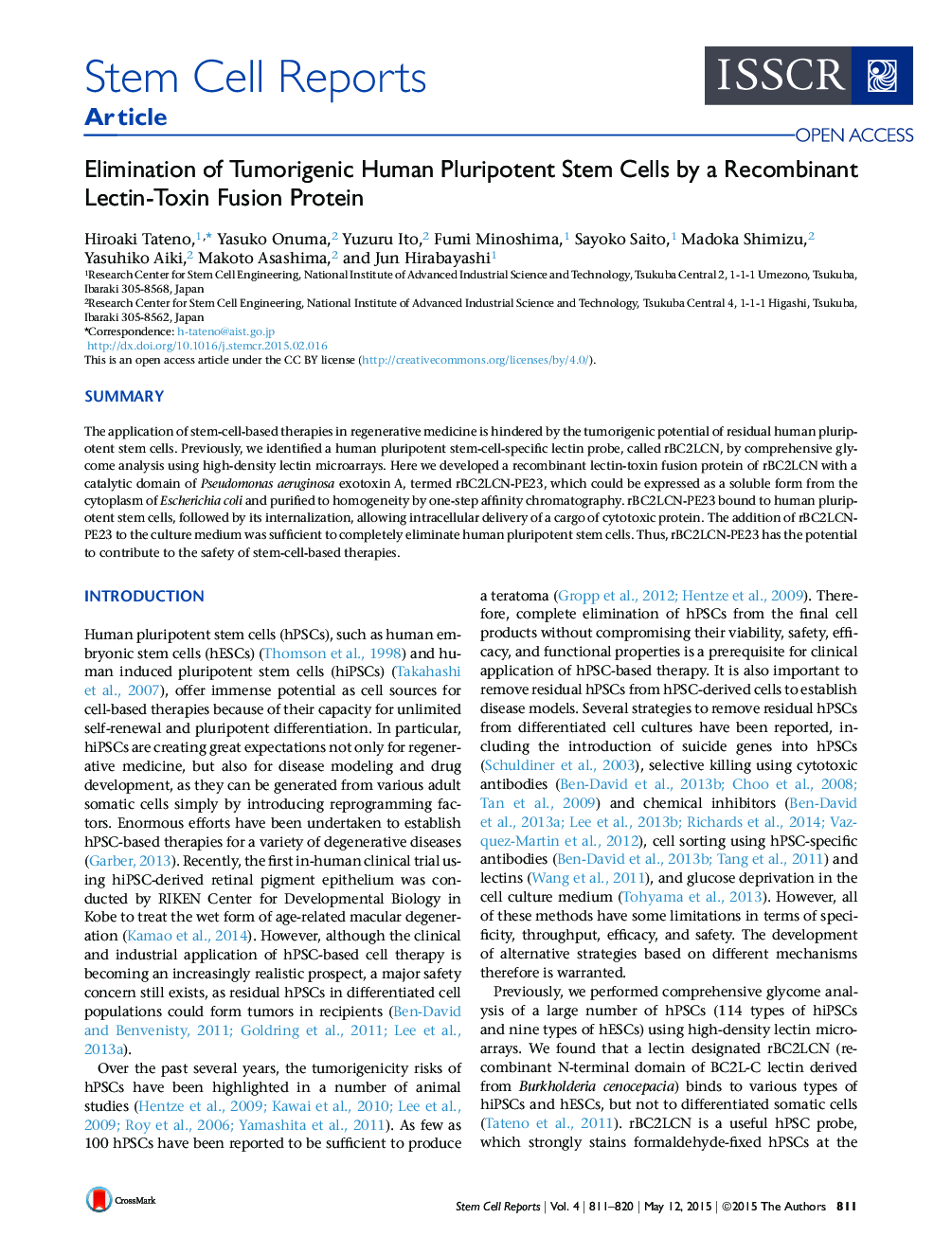| Article ID | Journal | Published Year | Pages | File Type |
|---|---|---|---|---|
| 2093573 | Stem Cell Reports | 2015 | 10 Pages |
•rBC2LCN-PE23 binds to and is internalized by human pluripotent stem cells•rBC2LCN-PE23 eliminates human pluripotent stem cells, but not differentiated cells•rBC2LCN-PE23 should contribute to the safety of stem-cell-based therapies
SummaryThe application of stem-cell-based therapies in regenerative medicine is hindered by the tumorigenic potential of residual human pluripotent stem cells. Previously, we identified a human pluripotent stem-cell-specific lectin probe, called rBC2LCN, by comprehensive glycome analysis using high-density lectin microarrays. Here we developed a recombinant lectin-toxin fusion protein of rBC2LCN with a catalytic domain of Pseudomonas aeruginosa exotoxin A, termed rBC2LCN-PE23, which could be expressed as a soluble form from the cytoplasm of Escherichia coli and purified to homogeneity by one-step affinity chromatography. rBC2LCN-PE23 bound to human pluripotent stem cells, followed by its internalization, allowing intracellular delivery of a cargo of cytotoxic protein. The addition of rBC2LCN-PE23 to the culture medium was sufficient to completely eliminate human pluripotent stem cells. Thus, rBC2LCN-PE23 has the potential to contribute to the safety of stem-cell-based therapies.
Graphical AbstractFigure optionsDownload full-size imageDownload as PowerPoint slide
